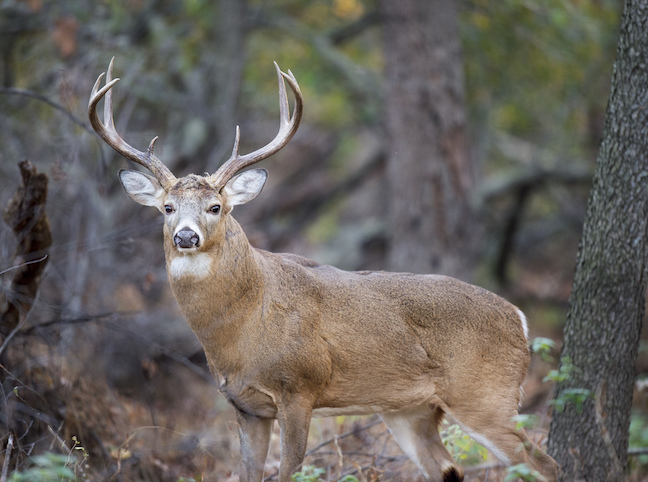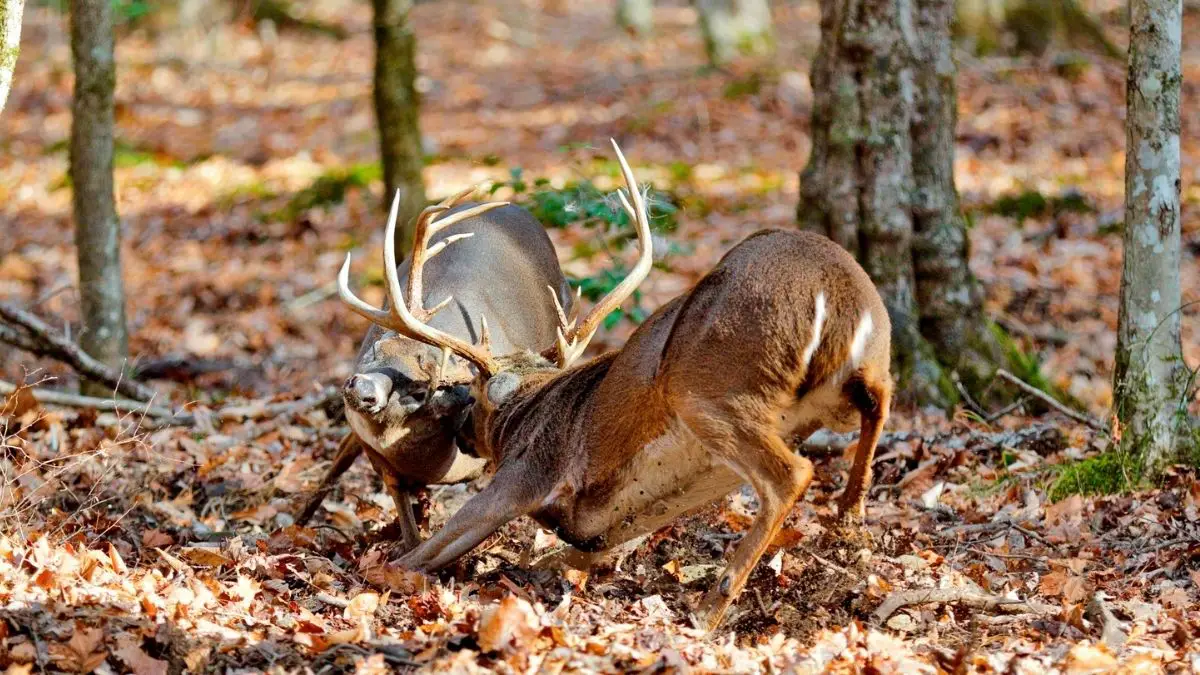Bucks mainly move during the rut in the early morning and late afternoon. The rutting season is that magical time of the year when the woods come alive with the sounds of deer mating calls and the clash of antlers.
As a hunter, there is no greater thrill than taking advantage of the window of opportunity to bring home a trophy buck. However, to make the most of this period, you need to be aware of the right time to go hunting.
The movement patterns of bucks during the rut are influenced by several factors, including weather conditions and the availability of food and water. Therefore, it is essential to take into account these variables to improve your hunting success rate. In this article, we’ll explore when bucks move during the rut and the reasons behind their movements.

Credit: www.gameandfishmag.com
Contents
- 1 Understanding The Rut Period For Bucks
- 2 Active Hours For Bucks During The Rut
- 3 Factors That Influence Buck Movement During The Day
- 4 Buck Bedding Habits During The Rut Period
- 5 Techniques For Maximizing Buck Movement During The Rut
- 6 Frequently Asked Questions On What Time Of Day Do Bucks Move During The Rut?
- 7 Conclusion
Understanding The Rut Period For Bucks
The rutting season for bucks is an exciting time for hunters. It is a period when bucks become more active and unpredictable. As the days get shorter and colder, hormones trigger changes in behavior. Bucks start looking for mates and become more aggressive.
This rutting season varies in different locations but generally occurs between late october and early december. During the rut, bucks are more likely to be active in the early morning and late evening hours. However, they can also be active during the day, especially when they are seeking a mate.
As a hunter, it’s important to understand the rut period to increase your chances of success. Stay updated with the latest news and tips to take your hunting to the next level.
Active Hours For Bucks During The Rut
During the rut, bucks have active hours that coincide with dawn and dusk. Various factors influence buck movement during the day, such as the presence of does, the availability of food and water, and the level of human activity in the area.
Weather patterns also have an impact on buck activity during the rut. Rain may suppress their movement, whereas cooler temperatures may increase it. Understanding the active hours for bucks during the rut and the factors that influence their movement can help you plan your hunting strategy and increase your chances of success.
Factors That Influence Buck Movement During The Day
Food availability plays a significant role in buck movement during the day. Bucks will move more during periods of high food availability, especially during the pre-rut phase. During the rut, breeding instincts become the primary factor that influences buck activity.
They’ll be more active and visible during the peak of the rut when they’re seeking out does. However, hunting pressure can impact buck activity significantly, causing them to adapt by shifting their activity patterns and becoming more active under the cover of darkness.
As such, it’s essential to understand these factors to increase your chances of success while hunting during the rut.
Buck Bedding Habits During The Rut Period
During the rut, buck bedding habits can be quite different from their normal routine. These preferences vary depending on the surroundings of a given area, such as topography, forest density, river sources and fields. Bucks often bed in areas with good visibility to aid them in detecting potential threats.
Sightlines, such as open spaces and elevated ground, provide a buck with a better view of their surroundings. As the rut progresses and bucks become more active on their feet, it is common to observe a pattern of increased movement in areas that are closer to preferred bedding locations.
By understanding these patterns, hunters can better position themselves to have a successful hunting trip.
Techniques For Maximizing Buck Movement During The Rut
To maximize your chances of targeting bucks during the rut, using trail cameras and specific technology can help identify their movements. By patterning their movements, you will know where and when to set up. Key tips for successful hunting include staying downwind, using grunt calls and scent lures, and being patient.
Avoid pressuring the bucks and hunt from a distance. Try to blend in and remain as still as possible. With a bit of luck and preparation, you can achieve great results during the rut. Remember to stay safe and always follow proper hunting regulations.
Frequently Asked Questions On What Time Of Day Do Bucks Move During The Rut?
What Time Of Day Are Bucks Most Active During The Rut?
Bucks are most active during the rut early in the morning and late in the afternoon. This is when they are looking for does to breed with, and they may travel long distances during these times.
What Is The Rutting Season For Bucks?
The rutting season for bucks typically occurs in the fall, with the peak of breeding activity taking place in november. This is when testosterone levels in male deer are at their highest, and when bucks are most active.
How Long Does The Rutting Season Last For Bucks?
The rutting season for bucks typically lasts for a few weeks, with the peak of breeding activity taking place over just a few days. However, bucks may be active and breeding for several weeks before and after the peak of the rut.
Do Bucks Travel In Groups During The Rutting Season?
During the rutting season, bucks are typically solitary animals and travel alone in search of does to breed with. However, in some areas with high deer populations, bucks may form loose groups during the rut.
What Noises Do Bucks Make During The Rut?
During the rut, bucks make a variety of noises to assert their dominance or attract does. These can include grunts, roars, and wheezes. These calls can be used both to intimidate other bucks and to attract females.
Conclusion
As a hunter, understanding the rut and the movement patterns of bucks is essential in increasing your chances of making a successful hunt. Knowing what time of day bucks move during the rut can be the difference between going home empty-handed or with a trophy buck.
Bucks are most active during the early morning and late afternoon hours, so it’s essential to plan your hunting times accordingly. However, it’s important to remember that every buck is different, and other factors play a significant role in their movement patterns.
Factors such as temperature, wind direction, pressure, and food sources can all alter a buck’s movement patterns. Therefore, it’s crucial to remain adaptable and keep a close eye on the variables that may impact the buck’s movement. While there isn’t a magic formula for predicting a buck’s movements, understanding the rut and its various factors can help you increase your chances of a successful hunt.
{ “@context”: “https://schema.org”, “@type”: “FAQPage”, “mainEntity”: [ { “@type”: “Question”, “name”: “What time of day are bucks most active during the rut?”, “acceptedAnswer”: { “@type”: “Answer”, “text”: “Bucks are most active during the rut early in the morning and late in the afternoon. This is when they are looking for does to breed with, and they may travel long distances during these times.” } } , { “@type”: “Question”, “name”: “What is the rutting season for bucks?”, “acceptedAnswer”: { “@type”: “Answer”, “text”: “The rutting season for bucks typically occurs in the fall, with the peak of breeding activity taking place in november. This is when testosterone levels in male deer are at their highest, and when bucks are most active.” } } , { “@type”: “Question”, “name”: “How long does the rutting season last for bucks?”, “acceptedAnswer”: { “@type”: “Answer”, “text”: “The rutting season for bucks typically lasts for a few weeks, with the peak of breeding activity taking place over just a few days. However, bucks may be active and breeding for several weeks before and after the peak of the rut.” } } , { “@type”: “Question”, “name”: “Do bucks travel in groups during the rutting season?”, “acceptedAnswer”: { “@type”: “Answer”, “text”: “During the rutting season, bucks are typically solitary animals and travel alone in search of does to breed with. However, in some areas with high deer populations, bucks may form loose groups during the rut.” } } , { “@type”: “Question”, “name”: “What noises do bucks make during the rut?”, “acceptedAnswer”: { “@type”: “Answer”, “text”: “During the rut, bucks make a variety of noises to assert their dominance or attract does. These can include grunts, roars, and wheezes. These calls can be used both to intimidate other bucks and to attract females.” } } ] }
